Characterization of Simultaneous Pressure Waves as Biomarkers for Colonic Motility Assessed by High-Resolution Colonic Manometry
- PMID: 30294277
- PMCID: PMC6159752
- DOI: 10.3389/fphys.2018.01248
Characterization of Simultaneous Pressure Waves as Biomarkers for Colonic Motility Assessed by High-Resolution Colonic Manometry
Abstract
Simultaneous pressure waves (SPWs) in manometry recordings of the human colon have been associated with gas expulsion. Our hypothesis was that the SPW might be a critical component of most colonic motor functions, and hence might act as a biomarker for healthy colon motility. To that end, we performed high-resolution colonic manometry (HRCM), for the first time using an 84-sensor (1 cm spaced) water-perfused catheter, in 17 healthy volunteers. Intraluminal pressure patterns were recorded during baseline, proximal and rectal balloon distention, after a meal and following proximal and rectal luminal bisacodyl administration. Quantification was performed using software, based on Image J, developed during this study. Gas expulsion was always associated with SPWs, furthermore, SPWs were associated with water or balloon expulsion. SPWs were prominently emerging at the termination of proximal high amplitude propagating pressure waves (HAPWs); we termed this motor pattern HAPW-SPWs; hence, SPWs were often not a pan-colonic event. SPWs and HAPW-SPWs were observed at baseline with SPW amplitudes of 12.0 ± 8.5 mmHg and 20.2 ± 7.2 mmHg respectively. The SPW occurrence and amplitude significantly increased in response to meal, balloon distention and luminal bisacodyl, associated with 50.3% anal sphincter relaxation at baseline, which significantly increased to 59.0% after a meal, and 69.1% after bisacodyl. Often, full relaxation was achieved. The SPWs associated with gas expulsion had a significantly higher amplitude compared to SPWs without gas expulsion. SPWs could be seen to consist of clusters of high frequency pressure waves, likely associated with a cluster of fast propagating, circular muscle contractions. SPWs were occasionally observed in a highly rhythmic pattern at 1.8 ± 1.2 cycles/min. Unlike HAPWs, the SPWs did not obliterate haustral boundaries thereby explaining how gas can be expelled while solid content can remain restrained by the haustral boundaries. In conclusion, the SPW may become a biomarker for normal gas transit, the gastrocolonic reflex and extrinsic neural reflexes. The SPW assessment reveals coordination of activities in the colon, rectum and anal sphincters. SPWs may become of diagnostic value in patients with colonic dysmotility.
Keywords: anal sphincter pressure; bisacodyl; colonic motility; gastro-colonic reflex; high-amplitude propagating pressure wave; high-resolution manometry; simultaneous pressure waves.
Figures
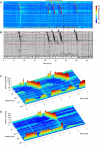
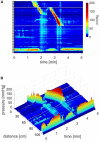

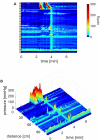


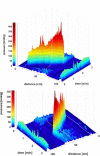
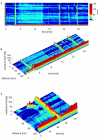
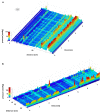
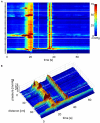
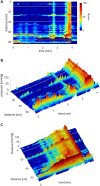


Similar articles
-
On the nature of high-amplitude propagating pressure waves in the human colon.Am J Physiol Gastrointest Liver Physiol. 2020 Apr 1;318(4):G646-G660. doi: 10.1152/ajpgi.00386.2019. Epub 2020 Feb 18. Am J Physiol Gastrointest Liver Physiol. 2020. PMID: 32068445 Free PMC article.
-
Associations Between Colonic Motor Patterns and Autonomic Nervous System Activity Assessed by High-Resolution Manometry and Concurrent Heart Rate Variability.Front Neurosci. 2020 Jan 23;13:1447. doi: 10.3389/fnins.2019.01447. eCollection 2019. Front Neurosci. 2020. PMID: 32038145 Free PMC article.
-
The cyclic motor patterns in the human colon.Neurogastroenterol Motil. 2020 May;32(5):e13807. doi: 10.1111/nmo.13807. Epub 2020 Mar 2. Neurogastroenterol Motil. 2020. PMID: 32124528
-
High amplitude propagated contractions.Neurogastroenterol Motil. 2012 Nov;24(11):977-82. doi: 10.1111/nmo.12019. Neurogastroenterol Motil. 2012. PMID: 23057554 Free PMC article. Review.
-
High resolution colonic manometry--what have we learnt?--A review of the literature 2012.Curr Gastroenterol Rep. 2013 Jun;15(6):328. doi: 10.1007/s11894-013-0328-2. Curr Gastroenterol Rep. 2013. PMID: 23709203 Review.
Cited by
-
A descriptive study of high resolution total colonic intracavitary manometry and colonic transit test in the diagnostic efficacy of functional constipation in Chinese patients.BMC Gastroenterol. 2022 Apr 9;22(1):175. doi: 10.1186/s12876-022-02240-x. BMC Gastroenterol. 2022. PMID: 35397499 Free PMC article.
-
Automated Analysis Using a Bayesian Functional Mixed-Effects Model With Gaussian Process Responses for Wavelet Spectra of Spatiotemporal Colonic Manometry Signals.Front Physiol. 2021 Feb 11;11:605066. doi: 10.3389/fphys.2020.605066. eCollection 2020. Front Physiol. 2021. PMID: 33643057 Free PMC article.
-
Recent advances in intestinal smooth muscle research: from muscle strips and single cells, via ICC networks to whole organ physiology and assessment of human gut motor dysfunction.J Smooth Muscle Res. 2019;55(0):68-80. doi: 10.1540/jsmr.55.68. J Smooth Muscle Res. 2019. PMID: 31956167 Free PMC article.
-
Distal Colon Motor Coordination: The Role of the Coloanal Reflex and the Rectoanal Inhibitory Reflex in Sampling, Flatulence, and Defecation.Front Med (Lausanne). 2021 Sep 6;8:720558. doi: 10.3389/fmed.2021.720558. eCollection 2021. Front Med (Lausanne). 2021. PMID: 34552946 Free PMC article. No abstract available.
-
High-resolution colonic manometry and its clinical application in patients with colonic dysmotility: A review.World J Clin Cases. 2019 Sep 26;7(18):2675-2686. doi: 10.12998/wjcc.v7.i18.2675. World J Clin Cases. 2019. PMID: 31616684 Free PMC article. Review.
References
LinkOut - more resources
Full Text Sources

